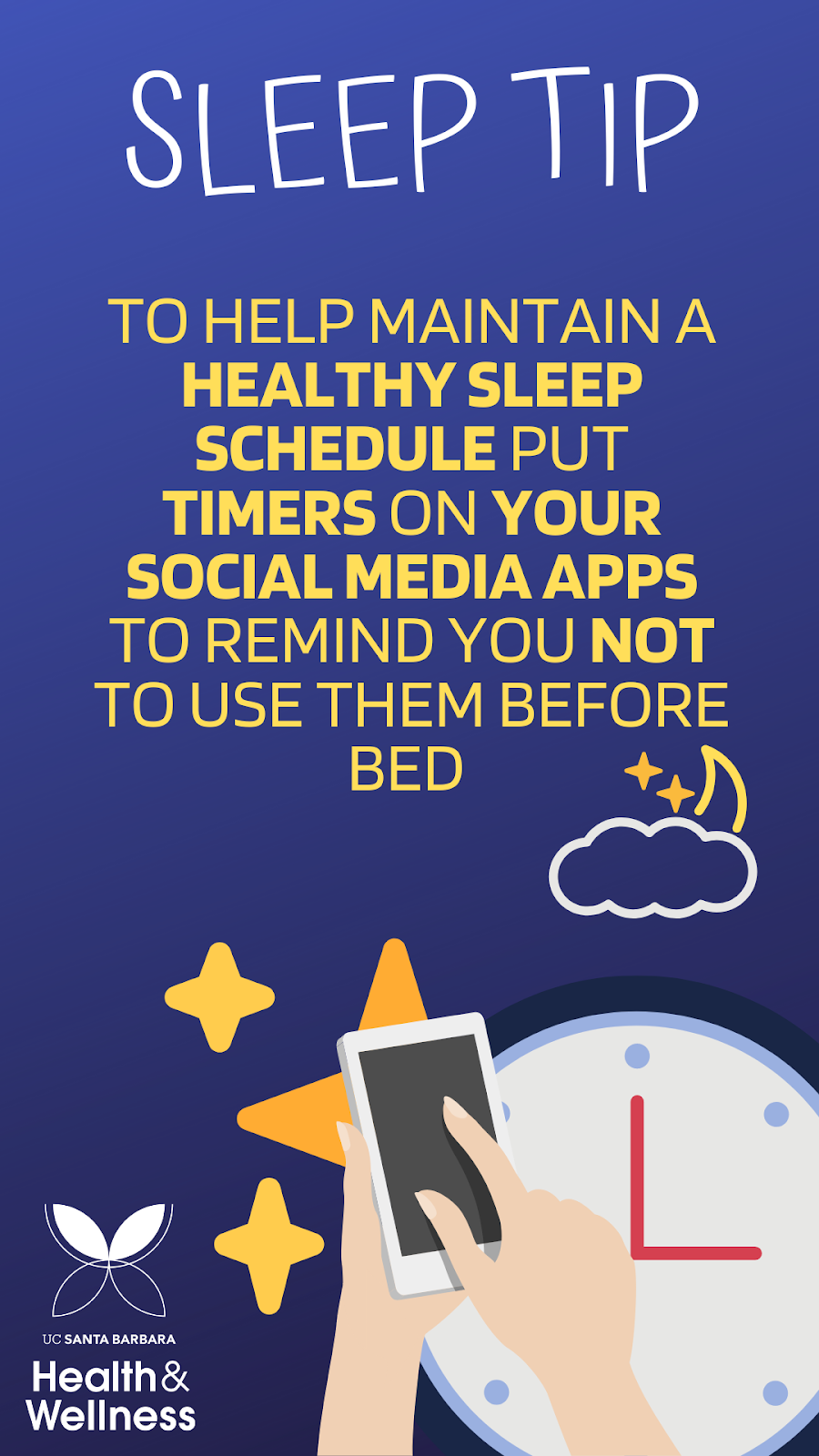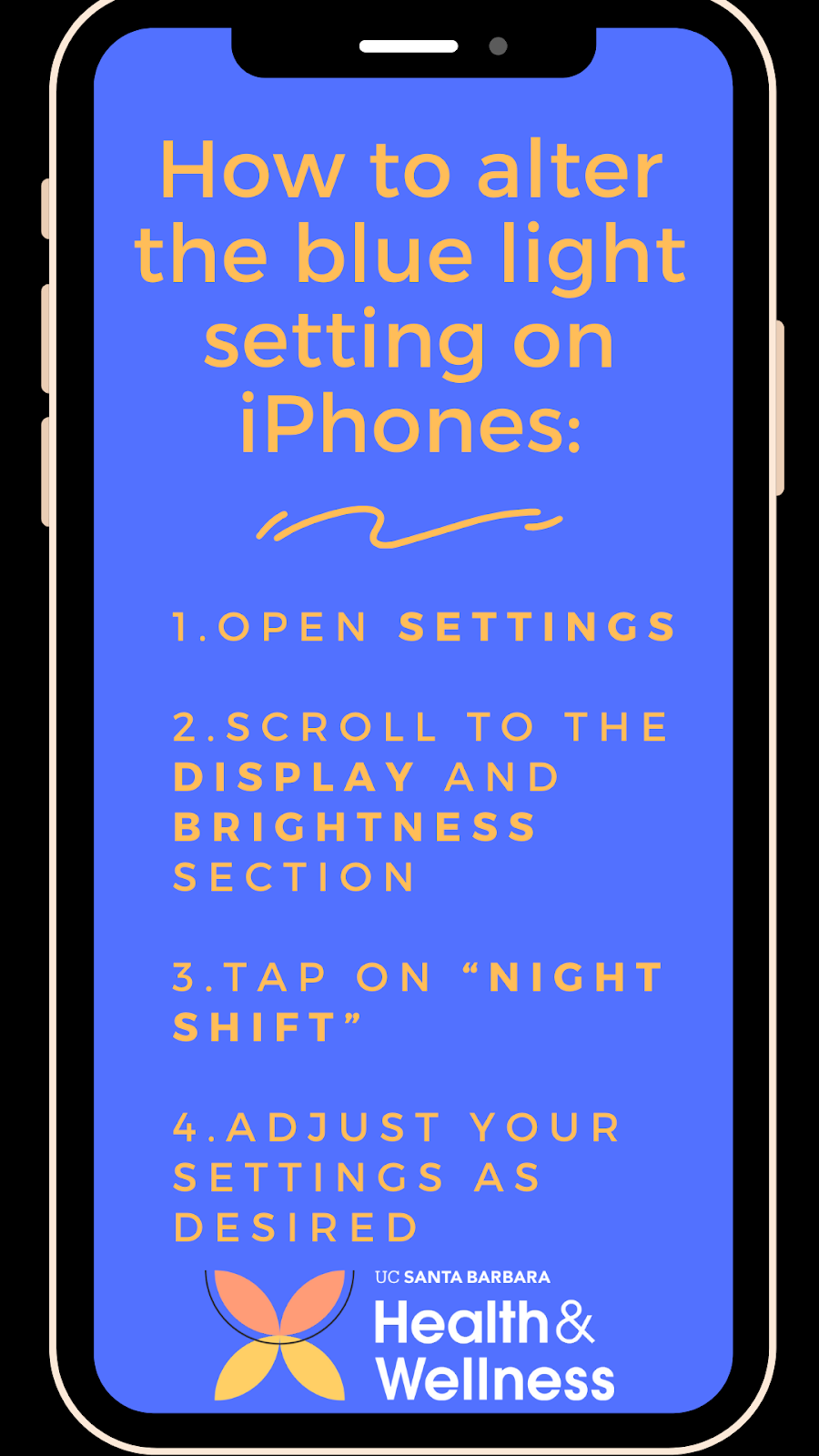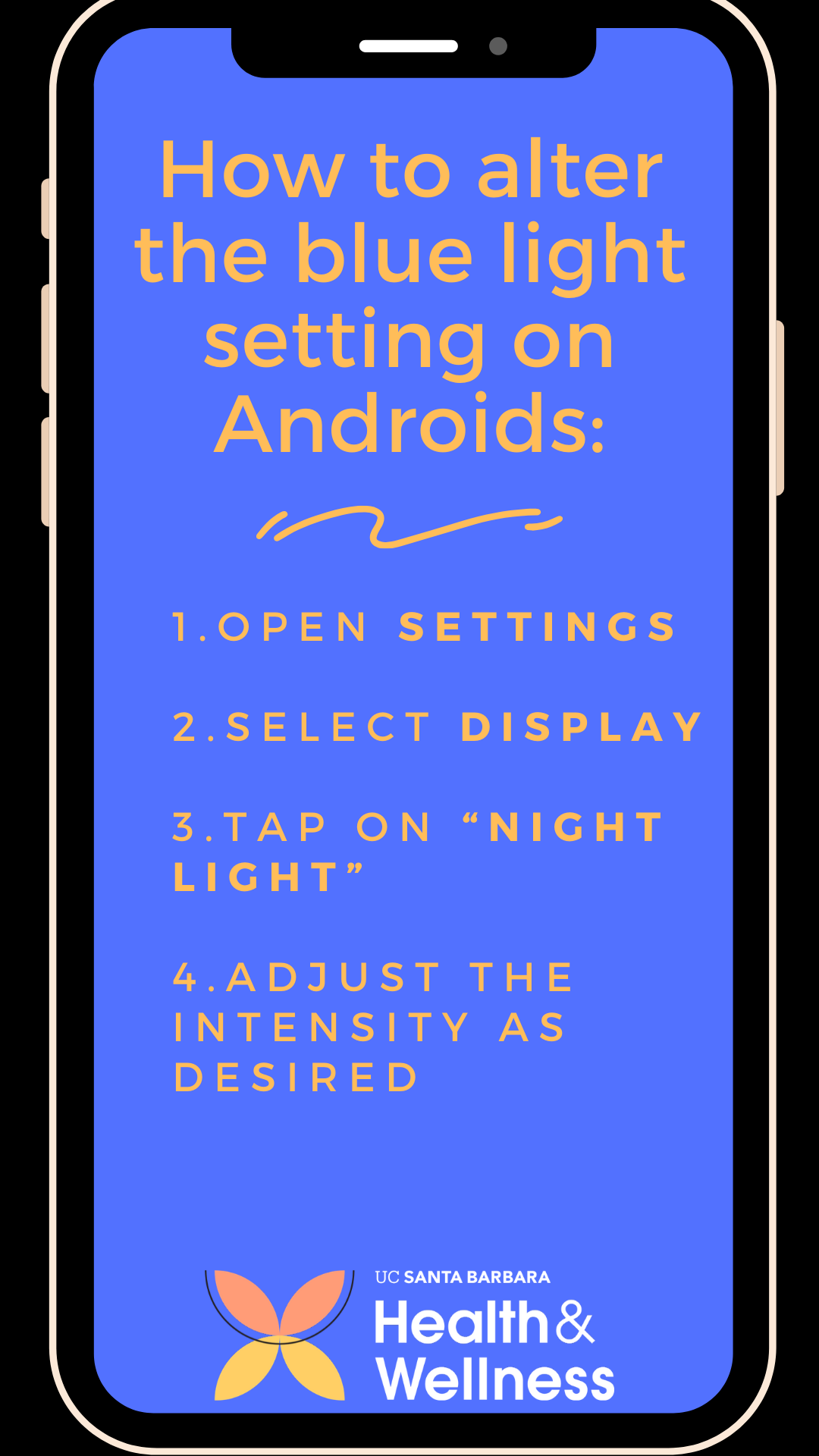
Scrolling through social media before bed? Binge watching your favorite series until you nod off? You could be robbing your body of its natural nighttime hormone production and tricking yourself into staying awake well past your natural bedtime!
One of the most simple, yet important ways technology affects our sleep is through stimulation. When we are constantly bombarded by online updates or let ourselves wander from one Instagram account to the next, we are feeding our minds with endless activity, the opposite of what you want to be doing before bed. Not only are we increasing neural synapses through this stimulating activity, the electronic device itself is also working against us. The National Sleep Foundation states that scientists are now finding that our circadian rhythm is particularly sensitive to light with short wavelengths. Energy-efficient light bulbs and most importantly, our screens, emit an artificial blue light in this short range. This delays the release of melatonin in our brains -- the sleep-inducing hormone that increases as the sun sets and light dims. Watching TV or looking at your laptop or phone as a way of winding down for sleep on a consistent basis can cause you to stay up later, rewiring what might be your body's natural bedtime.
National Sleep Foundation (2020, July 28). How Electronics Affect Sleep. Retrieved September 2020, from https://www.sleepfoundation.org/bedroom-environment/see/how-electronics-affect-sleep

Considering the information above, it may seem obvious that being on your phone right before bed does not help lull you to sleep. Yet, despite being equipped with scientific information, behavioral change can be difficult even when it is in our best interest. (We will admit, even as authors of the Sleep Challenge, we are not immune to the tempting screen scroll or Netflix binge before bed either). To help elicit behavioral changes it may be beneficial to understand why it is so hard to get off our phones. Although there are many different aspects of phone addiction, this section will focus on social media. To begin to understand why it is so hard to put apps like Instagram, Twitter, and Facebook down, it is essential to understand social media’s relationship to dopamine.
The National Institute on Drug Abuse defines dopamine as a neurotransmitter in the brain whose job is to increase the repetition of pleasurable behaviors (anything from healthy habits like socializing with your friends to unhealthy habits like addictive drug consumption). It does this by rewiring your brain, making it easier for the pleasurable behavior to become a habit.
National Institute on Drug Abuse. (2020, July). Drugs and the Brain. National Institutes of Health. https://www.drugabuse.gov/publications/drugs-brains-behavior-science-addiction/drugs-brain
How does this connect to social media? Since social behaviors are considered pleasurable by the brain, they cause a release of dopamine. There is a broad range of social behaviors in modern society, ranging from in-person interactions to comments on social media posts. Thus, every time you check your phone and get a notification on social media, dopamine is working in the background to make the action (checking your phone) that triggered that positive social behavior (the notication) into a habit. Additionally, the timing of the social media notifications is also designed to keep you checking your phone. You don’t get a notification or positive social reward every time you check your phone: receiving the notification is essentially random. The random timing of when you will get a positive social reward keeps you constantly checking your phone; this random reward system is the same design that many casino games use to keep people playing over and over again. This may also be why you can’t help but check your phone before bed.
Haynes, T. (2018, May 1). Dopamine, Smartphones & You: A battle for your time. Science in the News (Harvard University). http://sitn.hms.harvard.edu/flash/2018/dopamine-smartphones-battle-time/
"Although social media has enormous potential as a vehicle to foster connection and be used as an aid to our mental health, it also has the potential to fuel disconnection and can produce some significant mental health ramifications when its use is not managed effectively. One of the more concerning impacts it can have lies in the addictive nature of this activity. Just in the same respect that we monitor a number of addictive behaviors in our life, examining our relationship to social media is an equally important practice to ensure that we achieve a balanced sense of mental and physical well being. "
-Justin Smith
Behavioral Health Therapist, UCSB Alcohol Drug Program
If you are having trouble with breaking the habit of screen use before bedtime, the bottom line is don’t beat yourself up. These habits are hard to break because we are often working against the reward systems in our very own brains! The change towards a healthier balance between electronic usage and sleep hygiene will likely take place in two steps.
- Understand how device and screen time usage negatively impacts your sleep.
- Learn how to change your personal relationship with screen time before bed.
If you would like to learn more about this topic, check out ADP’s Justin Smith’s video on the addictive nature of electronics.
Now that we have learned some of the science behind how screen use negatively impacts our sleep, In the rest of the module, we will provide you with a variety of different tips and suggestions that can get you a few steps closer to changing habitual engagement with screens before sleep.
The first step in changing our relationship to habits and behaviors is to notice, and then be curious about why we are engaging in them. From this place of understanding, we can start to work with habit change.
Try this mindful journaling activity and see if you learn anything new about your relationship with your phone. For each of the following, write down a few words, phrases that describe your experience noticing what happens within your mind and body and you engage with each exercise.
- Start to think about your phone. Without actually picking it up, just bring an image to your mind of your phone (feel free to close your eyes). Notice what comes up for you (thoughts, emotions, physical sensations etc.) Write down your thoughts and experiences.
- Pick up your phone. Without engaging with your screen, notice what arises as you just feel it in your hand. Write down your thoughts and experience.
- Open a social media app (Twitter, Instagram, Facebook, Snapchat etc.) Passively scan the landing page without opening or actively engaging with the content. Write down your thoughts and experience.
- Begin to engage with the app (preferably, a quick engagement) whether that is reading a message, making a comment, liking a picture, creating a post. Write down your thoughts and experience.
- Put the phone away. Whether that be in your backpack, your pocket or even in another room. Write down your thoughts and experience.
Inspiration for this activity came from David Levy:
Levy, D. (n.d).The Cellphone Observation. David Levy. Retrieved January 2021, from http://www.davidmlevy.net/mindful-tech/the-cellphone-observation
Reflecting on your notes, was there a progression of feelings or emotions as you moved through the steps? Did your reaction to one of the steps stand out? Note any suggestions or takeaways you might have for yourself.
Reflecting on this mindful journaling exercise, if one or more reactions or engagements with the questions surprised you, it could be helpful to consider ways to manage your use of devices/screens to avoid problematic use. The UCSB Alcohol and Drug Program has developed a self assessment for further understanding your unique needs and relationship with screen management. Check it out here.
Try to create an electronic-free environment before bed that feels realistic to you. If you need to work on a paper from your laptop at night or really want to watch an episode of your favorite show, try and call it quits at least 30-60 minutes before bedtime, allowing yourself to unwind and settle into a bedtime routine. The earlier in the evening the better, but start by setting realistic expectations for yourself and you will soon find that those 8 AM classes won’t be so hard to get to.
If you can't go cold turkey with giving up the phone at bedtime, try the following activities instead of social media:
- Listen to a book on Audible (preferably something relatively mindless, Harry Potter is a personal favorite). You can even set a timer so the book turns off automatically in case you doze off.
- Check out a meditation app with sleep specific meditations (Ex. Aura, Calm, 10% Happier, Insight Timer, Headspace, etc.)
- Make a playlist of relaxing music on Spotify (perhaps white noise or nature sounds).
Another strategy to try and step away from your phone, especially if you feel social media is the primary reason you can’t seem to get away, is one inspired by researchers Hou, Xiong, Jiang, Song & Wang. In their study, they conducted one week social media intervention on people that were considered social media addicts. The intervention consisted of two parts. First, a short cognitive reconstruction where participants answered in-depth questions about their relationship with social media. Participants were then asked to journal daily about their social media use. After the one week intervention had completed, participants spent less time daily on social media, had increased self esteem, increased mental health scores, increased learning engagement, and increased sleep time compared to before they participated in the intervention.
We encourage you to take the time now to complete a short activity inspired by the intervention. All you need is a piece of paper, a pencil, and your phone. First, write down a list of activities that you wish you could do every day, but don’t have time to do. This could be anything from exercising more, learning to play the guitar, spending more time with friends, taking the time to meditate, or doing a meal prep for the week. After you have finished your list of activities, go through and write down how long you think each activity would approximately take. Next, go to screen time usage in settings. Write down how much you spend on social media apps every day. See how many activities from your list you could be able to do in that time. Keep this list near your workspace throughout the week and be thoughtful next time you feel the need to check social media.
If you feel like this activity was helpful for you, we strongly recommend that you read about the intervention more in depth by reviewing the original study:
Hou, Xiong, Jiang, Song & Wang’s study here: Hou, Y., Xiong, D., Jiang, T., Song, L., & Wang, Q. (2019). Social media addiction: Its impact, mediation, and intervention. Cyberpsychology: Journal of Psychosocial Research on Cyberspace, 13(1), Article 4. https://doi.org/10.5817/CP2019-1-4
Click here to find out some ways to combat Zoom exhaustion!
There are many wonderful ways to utilize technology in helping us limit utilizing technology! Create some balance with your tech use through apps that limit your screen time. Space (for iPhone and Android) helps you set goals to be more mindful of your screen usage. Or check out Screen Time for iPhone or the Wellbeing setting on your Android, which lets you know how much time you spend on apps, websites, and more. This way, you can make more informed decisions about how you use your devices, and set limits if you'd like to.


Don’t forget to also adjust these settings on your laptop or PC

This work is licensed under a Creative Commons Attribution 4.0 International License.